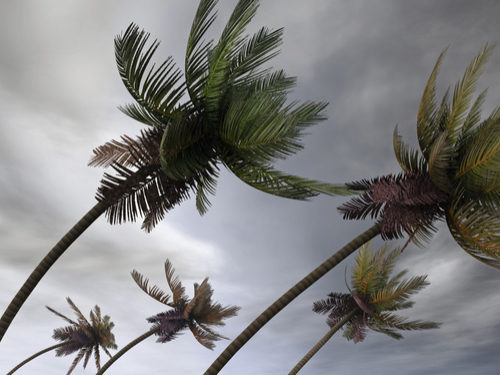
Visit Our Sponsors |
|
|
|
|
|
|
|
|
|
|
|
|
|
|
|
|
|
|
|
|
|
|
|
|
|
|
|
|
|
|
|
|
|
|
|
|
|
|

Tropical Storm Dorian is strengthening as it swirls toward the Caribbean island of Barbados, potentially reaching near hurricane strength by Tuesday, while a second system struggles to get organized in the waters off Florida.
Dorian, with top winds of 50 miles (85 kilometers) per hour, was about 375 miles east-southeast of Barbados, where a tropical storm warning has been posted, the U.S. National Hurricane Center said Sunday night. The system is moving west at 14 mph and will probably reach the island late Monday or early Tuesday.
Tropical storm warnings or watches have been posted for a number of other Caribbean islands, including St. Lucia, St. Vincent and the Grenadines, Grenada and Martinique.
“Additional watches or warnings could be issued tonight for portions of the Windward and Leeward Islands,” Senior Hurricane Specialist Jack Beven wrote in the advisory. “Interests in Puerto Rico and Hispaniola [the Dominican Republic and Haiti] should monitor the progress of Dorian.”
The current forecast will bring Dorian across Hispaniola by the end of the week, and if that holds, the storm could be disrupted by the mountains, said Dan Pydynowski, a meteorologist with AccuWeather Inc. in State College, Pennsylvania.
While packing weaker winds than hurricanes, tropical storms can still cause extensive damage and loss of life. In August 2015, Tropical Storm Erika killed at least 30 people and left 574 homeless when it raked Dominica, to the north of Barbados. Another person died on Haiti days later.
More recently in 2017, Hurricane Maria, best known for the devastation caused to Puerto Rico and the U.S. Virgin Islands, caused catastrophic damage when it struck Dominica as a Category 5 storm.
Hurricane season runs from June 1 to Nov. 30, but the peak of the season is happening now and will continue through early October. Atlantic hurricanes are closely watched because they can disrupt natural gas, oil and agriculture markets, as well as threaten billions of dollars in real estate both in the U.S. and across the region, including Caribbean islands that depend heavily on tourism.
The Gulf of Mexico region accounts for 16% of U.S. crude oil output and less than 3% of dry natural gas, according to the Energy Information Administration. More than 45% of U.S. refining capacity and 51% of gas processing is along the Gulf coast. And Florida is the world’s second-largest producer of orange juice after Brazil.
From late August to early October, storms forming between the Windward Islands and Cabo Verde off the coast of Africa often become the strongest and deadliest of the Atlantic hurricane season.
Ahead of Dorian, off the coast of Florida, another system had a 70% chance as of 2 p.m. EST of becoming at least a tropical depression in the next two days. A tropical depression is the weakest system in the family of storms that includes hurricanes.
RELATED CONTENT
RELATED VIDEOS
Timely, incisive articles delivered directly to your inbox.






